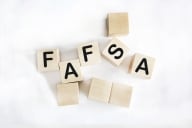You have /5 articles left.
Sign up for a free account or log in.
A Brookings Institution report examines what would happen if the U.S. Congress dropped a federal regulation that limits the share of federal revenue for-profit colleges can receive.
The paper, which was released this month, examined the effects of the so-called 90-10 rule on for-profit, private and public colleges. The rule requires 10 percent of federal aid-eligible for-profit institutions' revenue to come from nonfederal sources. But the cap doesn't apply to revenue from U.S. military and veteran student benefits.
Enacted by Congress in the '90s, the rule's intent is to be a market-based form of quality control by requiring for-profit programs to attract some students who pay out of pocket, and to prevent for-profits from relying solely on federal aid revenue.
However, congressional Republicans recently have challenged the fairness of the rule because it only affects the for-profit sector. The Trump administration has echoed that call with its broad effort to eliminate regulatory differences in the way for-profit and nonprofit colleges are treated.
Senator Lamar Alexander, the Tennessee Republican who chairs the Senate's education committee, wrote last year that what the rule "really measures is the socioeconomic status of students enrolled at the school, not the quality of the institution," adding that "students who have the resources to contribute personal or family funds or secure private loans to cover the full cost of higher education are a small minority."
Democrats, meanwhile, have pushed to close the military-benefits exclusion "loophole" by counting those benefits toward the cap on federal revenue.
The Brookings report found that nixing the rule entirely would have a serious impact -- a negative one.
“The rule seems to be a real limitation on the ability of certain for-profit schools to expand, especially the large chains,” said Adam Looney, a senior fellow in economic studies at Brookings and a co-author of the report. “If the 90-10 rule is eliminated … more students would be going to these large for-profit chains, and more of them would have relatively worse outcomes when it comes to student loans.”
Likewise, a Congressional Budget Office report released last year estimated that repealing the rule would cost taxpayers $2 billion in federal financial aid and student loans over the next 10 years.
The Brookings analysis also found that if military student benefits were included in the cap, for-profit institutions that served 24 percent of all students in the sector would have failed the rule in 2015. Institutions that served more than 30 percent of students at four-year for-profits also would have failed, the report found.
A spokesman from Career Education Colleges and Universities, which represents for-profit institutions, said in an emailed statement, “The 90-10 rule is not a measure of institutional quality. It is a financial calculation that is a measure of the socioeconomic position of the student population served by that institution.”
Public and nonprofit colleges, many of which also enroll large numbers of low-income students, mostly would not fail the regulation if it applied to them. That's because substantial chunks of their revenue comes from students paying out of pocket and from state and local government funding, according to the analysis.
More than 97 percent of public and nonprofit institutions would comply with the 90-10 rule if it applied to those sectors, the report found, citing federal data.
CECU opposes including military aid revenue in the 90-10 rule.
“Military benefits are earned benefits and that entitles servicemembers and veterans to use those benefits as they see fit,” the group said. “This is distinctly different from federal student aid and thus should be calculated differently.”
The analysis also examined lowering the federal revenue threshold to 85 or 80 percent. Some large for-profit companies have committed to a lower threshold on their own. DeVry University, for example, in 2016 introduced a self-imposed cap of 85 percent.
But many for-profit institutions would fail the rule if the threshold were lowered, the analysis found. If the rule were changed to 85-15 -- which it was until 1998 -- the report said 13 percent of for-profit colleges would have failed in 2015. An 80 percent cap would result in 27 percent of for-profit colleges failing, according to the report.
Looney said for-profit institutions should be able to stay below the 90 percent threshold.
"There are a lot of for-profit schools that easily comply with the 90-10 rule because students pay for it out of pocket," he said.
Mark Kantrowitz, publisher and vice president of research for savingforcollege.com, argued in a 2013 paper that state appropriations and grants should count toward the cap on government aid. If those funds were counted, 98 percent of community colleges and 77 percent of public, four-year institutions would run afoul of the rule, according to his paper, which Alexander cited.
The exclusion of state funds in the calculation undermines the argument that the rule creates "skin in the game" for students, Kantrowitz said via email.
"Why does one get to pick and choose which type of government funding is included and which is ignored?" he said. "The reality is that without federal and state support, the higher education system would collapse."
-- Paul Fain contributed to this article.








